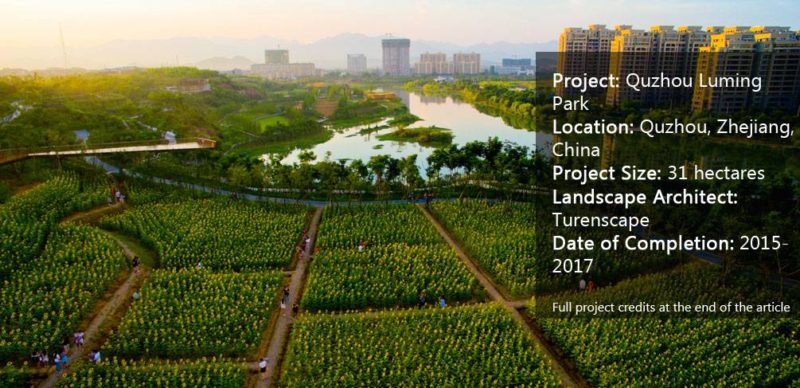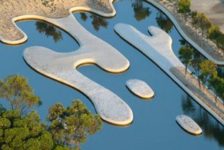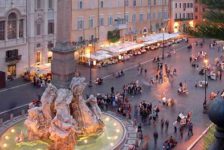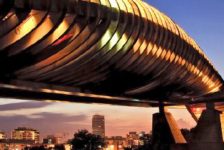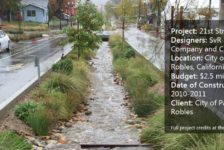Quzhou Luming Park by Turenscape, in Quzhou, Zhejiang, China. A sea of color greets visitors when they enter the new Quzhou Luming Park, and it is a color palette that changes with the seasons. Located along the west bank of Shiliang Creek west of the new district of Quzhou, the 31.3-hectare park is a place where agriculture meets healthy living. and the two combine to produce a spot that attracts people from all walks of life. Home to more than 2.5 million people, Quzhou features picturesque landscapes and abundant natural resources, both of which helped the city to be named a National Eco-Model City, National Garden City and to receive the title of Excellent National Tourism City. It was with this in mind that first-level design institute Turenscape set out to design the district’s newest park and tourist attraction.
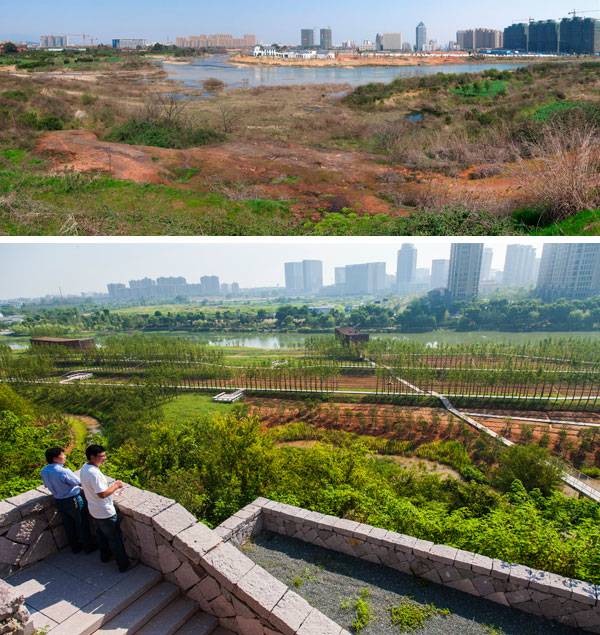
Quzhou Luming Park. Photos courtesy of Turenscape
Quzhou Luming Park
Knowing that Quzhou has a goal of becoming the green base for the marine economy of China’s Zhejiang province and for transforming the city into a place filled with culture, ecology, and dynamic entrepreneurship, Turenscape designed a park that represents all that Quzhou is attempting to become. More Incredible Projects by Turenscape:
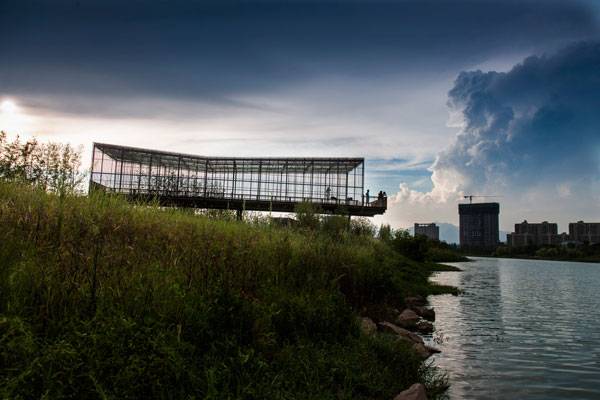
Quzhou Luming Park. Photos courtesy of Turenscape
While the urban waterfront park was designed to be a place for people to gather, exercise, and recreate, it was also designed with sustainable ecology in mind. Based on the site’s topography of red sandstone hills and a large floodplain in the lower area,
the park was designed to showcase three design concepts: 
Quzhou Luming Park. Photos courtesy of Turenscape
The designers knew that the red sandstone hills offered a unique landscape, so instead of attempting to cover or change them, they instead decided to display them and incorporate the hills into the design. By utilizing bridges, on-grade path systems, and several stilted viewing pavilions, the designers were able to preserve the site’s native geologic features and vegetation to create an accessible and diverse open space. They also used these design features as a way to display the landscape and allow visitors to view the park from both above and within.
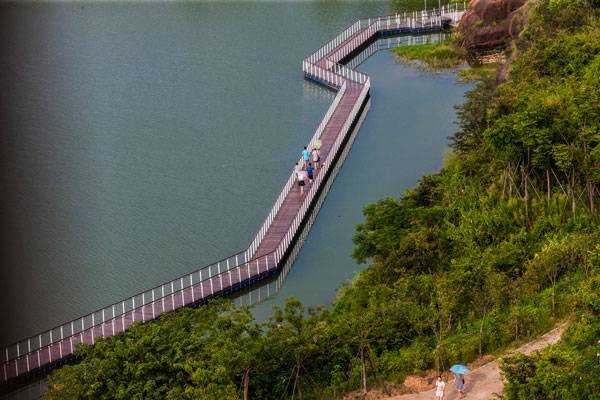
Quzhou Luming Park. Photos courtesy of Turenscape
Knowing that the floodplain contained fertile soil suitable for growing crops, the designers decided to use this to their advantage. They scattered patches of plantings on the sandstone hills, then heavily planted the floodplain with rotating crops such as canola in the spring and low-maintenance sunflowers and chrysanthemum in the summer months. By doing this, they created a space that is productive, but also offers visitors different scenes at varying times.
Visitors are encouraged to interact with these plantings and to get lost in the beauty that surrounds them. 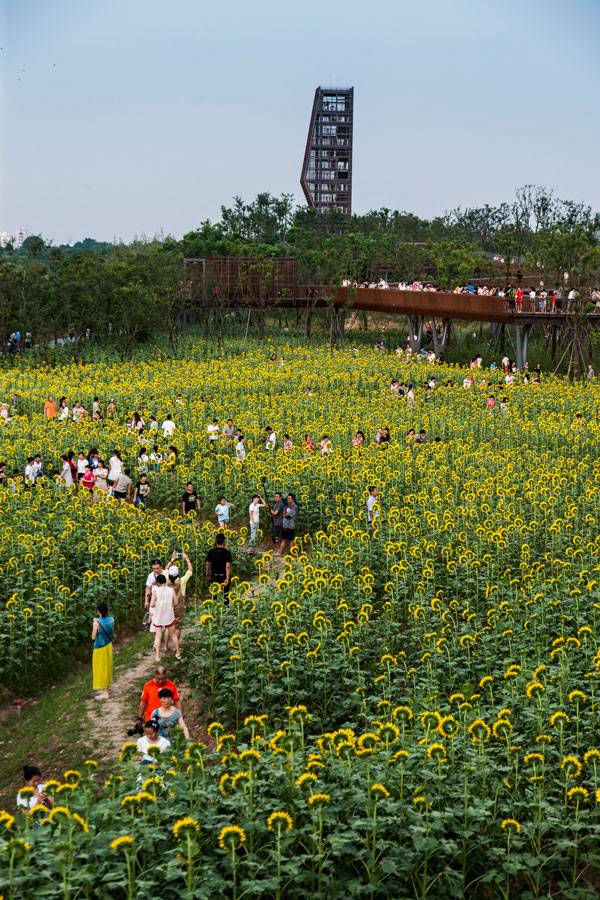
Quzhou Luming Park. Photos courtesy of Turenscape.
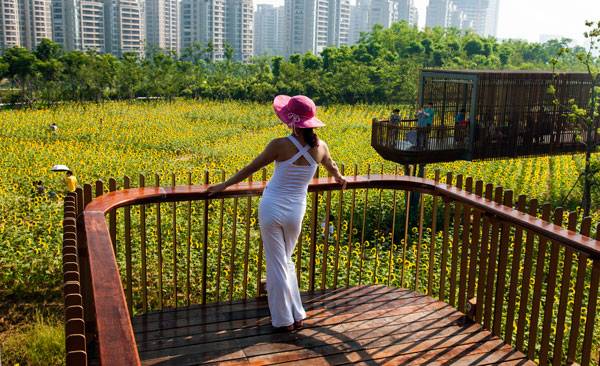
Quzhou Luming Park. Photos courtesy of Turenscape.
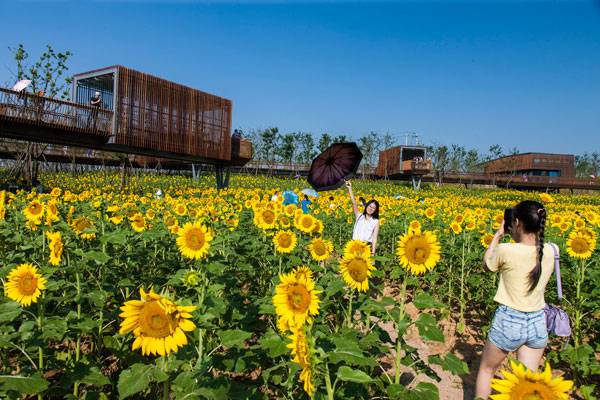
Quzhou Luming Park. Photos courtesy of Turenscape.
Since much of the parkland is located in the floodplain, the designers were hesitant to build structures that would interfere with the natural flow of water. To avoid this disturbance, they opted for floating boardwalks along the creek edges, bridges, and pavilions, which are built on stilts that seem to rise out of the water.
In the words of Turenscape, all of these were designed to “
make friends” with the water and be resilient enough to stand the test of time. They also allow the floodplain to serve as natural irrigation for the crops planted there.
IN ADDITION TO THE THREE DESIGN CONCEPTS, the designers also took into account the
more than 1,800 years of history that belongs to Quzhou, including the scenic and historical relics that still remain in the surrounding city. They preserved pebble paths, pavilions, agricultural pumping stations, and tunnels out of respect for the city’s cultural heritage. They also designed an environmental interpretation system that is located throughout the park as a way to introduce visitors to the natural and cultural history of the site.
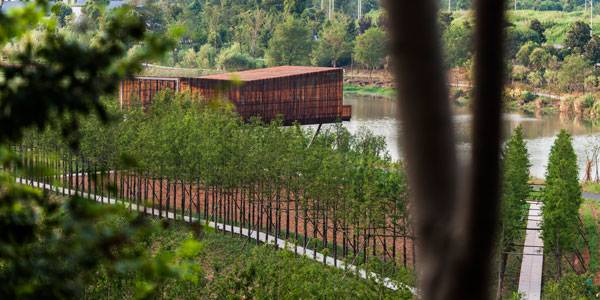
Quzhou Luming Park. Photos courtesy of Turenscape
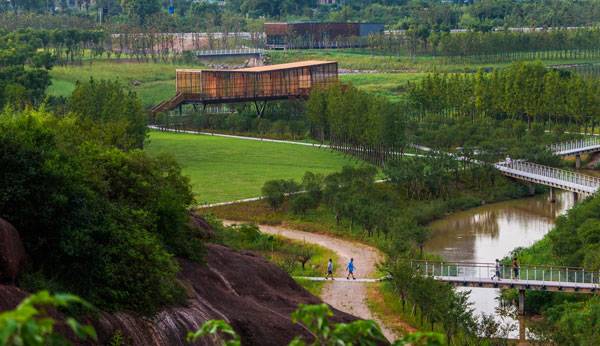
Quzhou Luming Park. Photos courtesy of Turenscape
This park falls under the city’s plan to unify and lead the people of Quzhou to accelerate the economic and cultural development of the city through green construction, which both unites and develops the peaceful and harmonious climate of the whole city. Their ultimate goal is to catch up with the other cities in the Zhejiang Province in the area of green infrastructure and to boost the city’s economy.
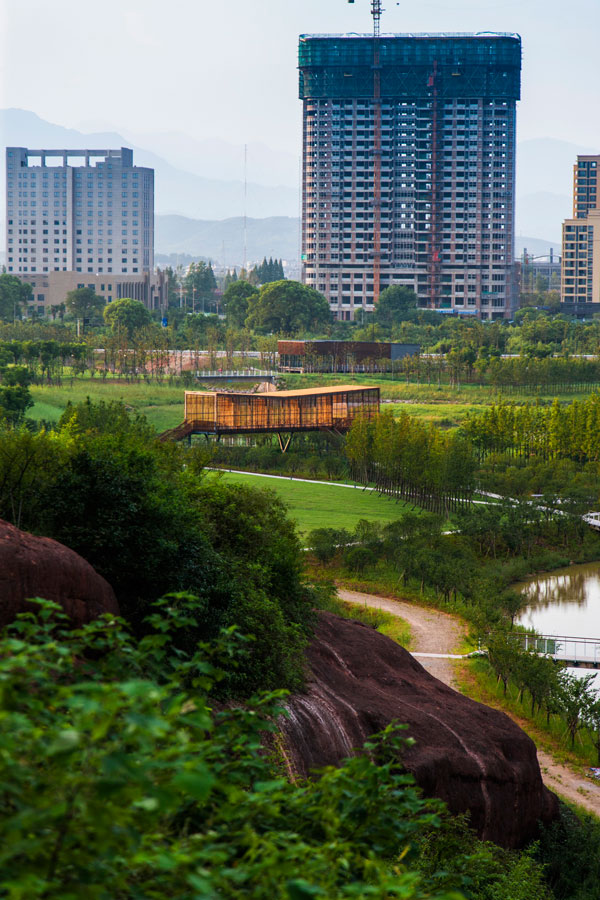
Quzhou Luming Park. Photos courtesy of Turenscape
is helping the city to reach this goal and has been widely acclaimed by both visitors and the city alike, who are already referring to the park as a must-see destination that contributes to the overall identity of Quzhou.

Quzhou Luming Park. Photos courtesy of Turenscape.
When it comes to green infrastructure, it’s important to realize that sometimes the most innovative designs are the ones that involve the least amount of intervention. It’s so easy to get caught up in the creation of new technologies to recreate what comes naturally to a space. But, as in the case of Quzhou Luming Park, sometimes it’s best to leave natural processes to, well, nature. It is in this simplicity that nature is truly allowed to shine.
Can you think of another example of a large-scale project that uses minimal intervention to remain sustainable? 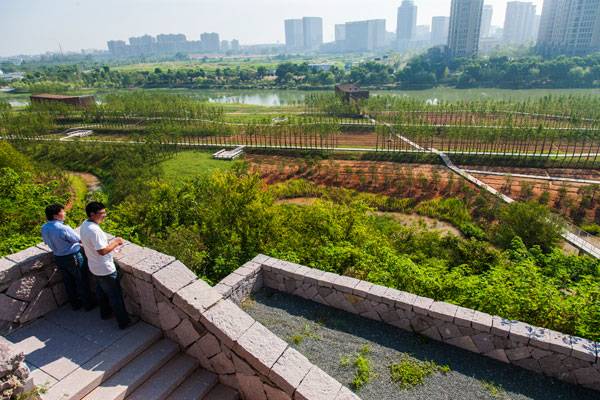
Quzhou Luming Park. Photos courtesy of Turenscape
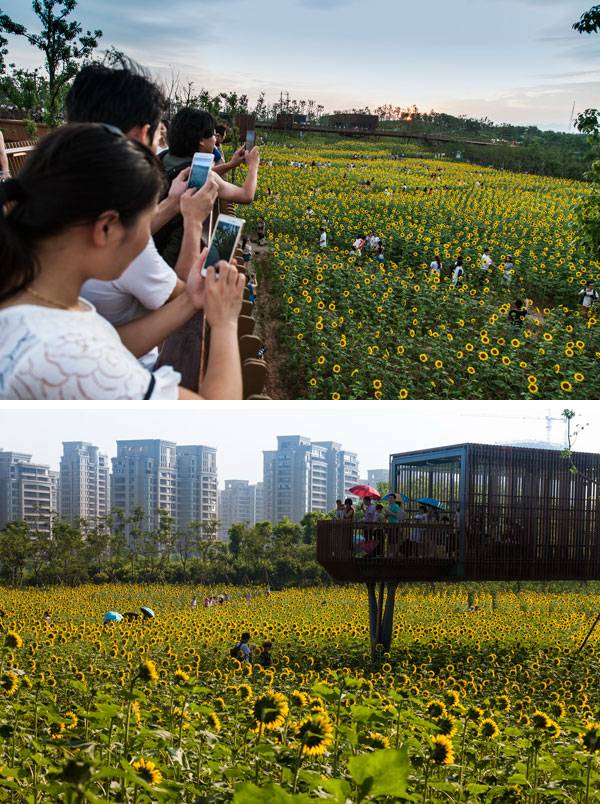
Quzhou Luming Park. Photos courtesy of Turenscape.
Full Project Credits For Quzhou Luming Park
Project: Quzhou Luming Park Location: Quzhou, Zhejiang, China Project Size: 31 hectares Landscape Architect: Turenscape Date of Design: February 2013 Date of Completion: 2015-2017 Client/ Owner: Quzhou Infrastructure Investment Pte. Ltd. Website: www.turenscape.com Recommended Reading:
Article by Erin Tharp Return to Homepage
Published in Blog














